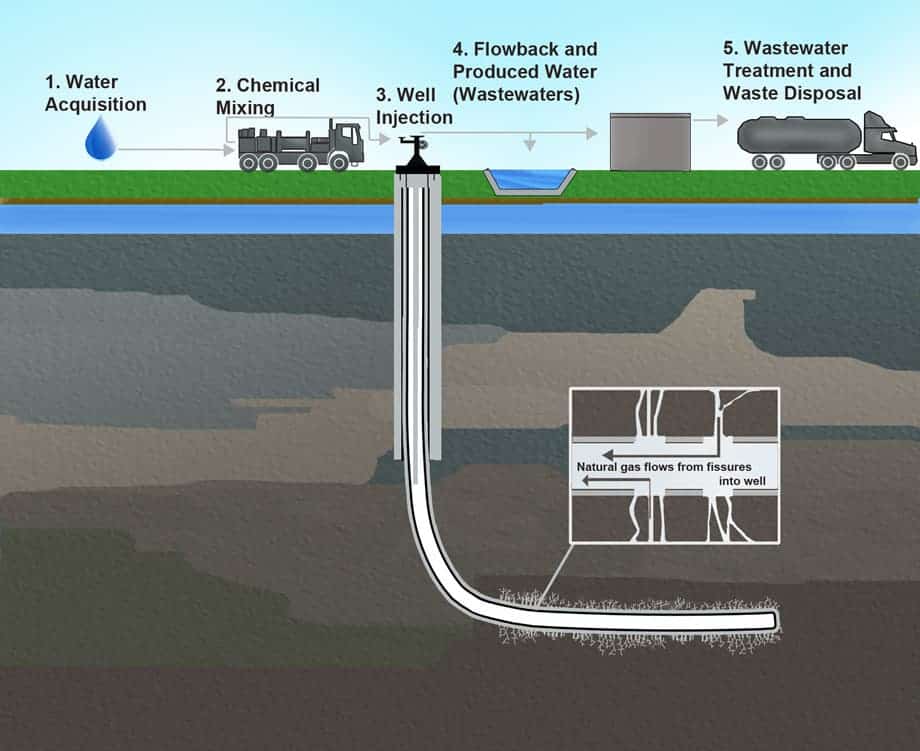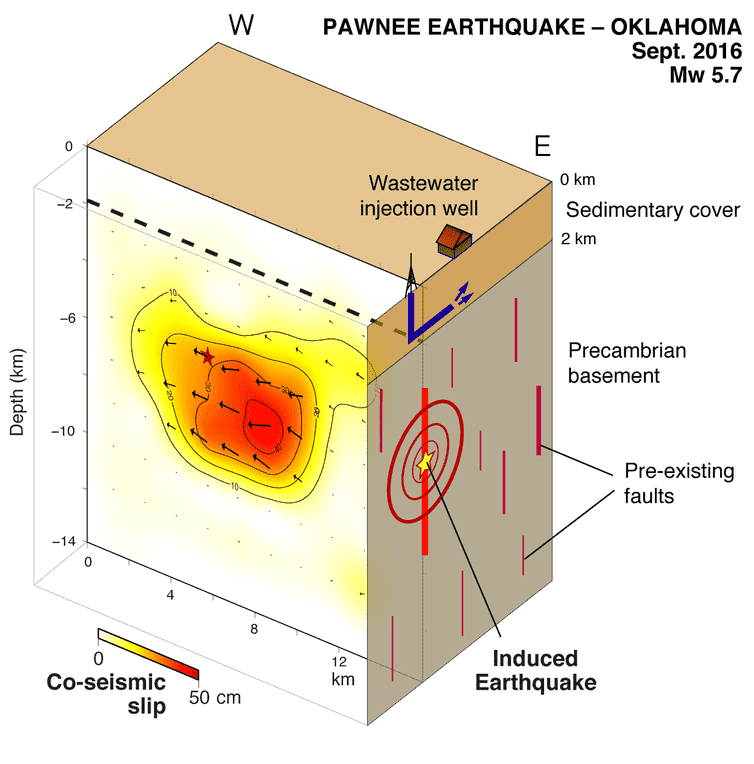A new study confirmed that oil and gas exploitation in the US can generate a surprising number of earthquakes.
A few decades ago, Oklahoma barely had any earthquakes. Nowadays, there’s a few hundred earthquakes magnitude 3 or greater every year, with over 800 such earthquakes in 2015. This is pretty bizarre and especially unexpected when you consider that all this is happening in the Great Plains, far away from the boundary of any tectonic plates and major fault. So what’s happening, then?
Oil and gas

In 2014, a study conducted by USGS geologists caused quite a fuss, concluding that wastewater injection associated with hydrocarbon exploration (oil and gas) caused a 5.0 earthquake near Prague, Oklahoma, and several smaller ones. A further study confirmed these concerns, finding that the average yearly number of earthquakes over the magnitude of 3 had gone up from 1 to 230. The connection between these earthquakes and hydrocarbon activities tightened in 2016 when a paper found a clear link between hydraulic fracking and the increased seismicity. There were clear signs that fracking has the potential to activate geological faults.
“This seismic event was caused by hydraulic fracturing,” Ken Paulson, CEO of the BC Oil and Gas Commission, said in a statement.
Aside from the things often discussed in relation to fracking, there’s also the problem of water. Hydraulic fracking, as the name implies, requires water — a lot of it. Water use per well can be anywhere from about 1.5 million gallons to about 16 million gallons, and fields tend to have hundreds of wells. In just two years, 8.8 billion gallons of wastewater were injected in Oklahoma alone. Faced with what was already an emerging crisis, authorities in Oklahoma have taken first steps to regulate wastewater injection and a reduction in earthquakes was reported — though there were still over 600 temblors in 2016.
But the improvement was slight at best. In September 2016, the Pawnee earthquake struck with a magnitude of 5.8. It was the strongest earthquake ever recorded in Oklahoma. Now, researchers from the Institut de physique du globe de Paris (IPGP) have just published a study on this earthquake.
The black culprit

Analyzing seismological data recorded in the region of the Pawnee earthquake as well as seismograms acquired thousands of kilometers from the epicenter, they were able to detail how the rupture happened and how the seismic wave spread from the epicenter. They then combined this data with radar interferograms from the Sentinel-1 satellites of the European Space Agency (ESA), measuring the surface deformation induced by the earthquake.
By studying all of this, they concluded that the slip of the earthquake was 40 centimeters at most, while the epicenter’s depth is anywhere between 4 and 9 kilometers deep (when the epicenter is very shallow, its exact depth is almost impossible to deduct). At a first glance, this would indicate that there’s no connection between the hydrocarbon activities and the earthquake since wastewater injection takes place at 2 to 3 kilometers. However, at a deeper look, scientists found that this brings forth a much more worrisome conclusion: these injections can reactivate a seismic fault.
It’s not exactly clear how this happens, though two mechanisms are possible. Either the injection pushes other fluids outward, creating a pressure “wave” which reaches the geological fault and then causes critical pressure on a fault — even an inactive one. Another proposed mechanism is centered on the tendency of rocks to deform elastically over short time scales (from a few days to several months). Like a sponge, rocks can accumulate fluids, and then release them under stress, again potentially reactivating faults. The fact that injections can generate earthquakes not only locally, but also in remote places, is even more concerning.
A political fault
3 reasons why EPA head Scott Pruitt can’t be trusted with climate science. https://t.co/0XrugYCnpR #MarchForScience
— EDF (@EnvDefenseFund) April 22, 2017
To make things even worse, we didn’t even know of the existence of this fault beforehand. Locating underground faults is extremely difficult, and the lack of knowledge of fault networks brings major risks. Previous studies have shown that the reactivation of such faults is not impossible even naturally — when you give them an extra boost (with hydraulic fracking, for instance), things can get worse faster.
But if you’ve made it thus far, then I have even more bad news. It’s not just the local geology and the oil & gas industry causing problems… it’s also the political environment. Even before becoming the head of the Environmental Protection Agency, Scott Pruitt has worked relentlessly in Oklahoma to oppose the installing of new environmental laws and even to support the removal of existing regulations. With his powers increasing and with the clear anti-environment stance president Trump has taken, it’s unlikely that things will get better anytime soon in Oklahoma, and other similar parts of the US. Adding the political factor into a puzzle which already includes a nasty industry, unknown faults, and earthquakes seems like a recipe for disaster.
Journal Reference: Raphaël Grandin, Martin Vallée, Robin Lacassin — Rupture Process of the Mw 5.8 Pawnee, Oklahoma, Earthquake from Sentinel‐1 InSAR and Seismological Data. DOI: 10.1785/0220160226.


